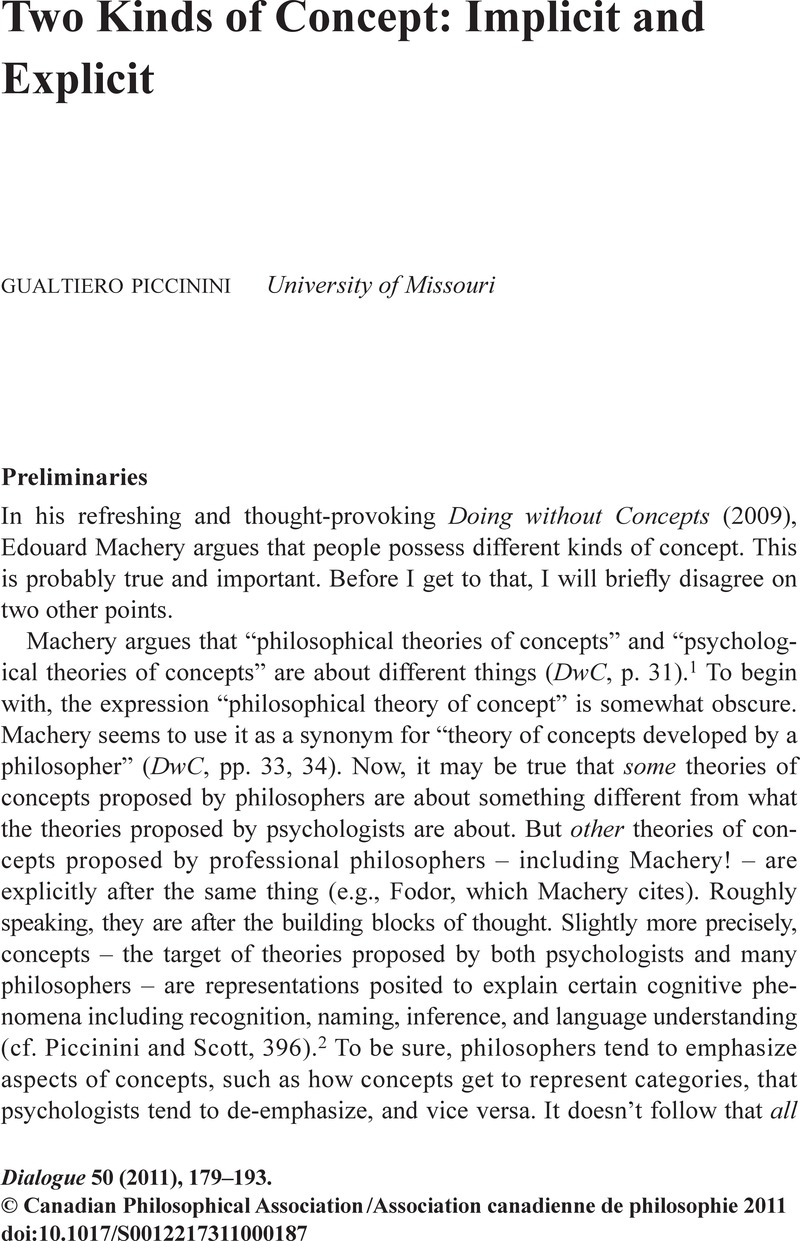Crossref Citations
This article has been cited by the following publications. This list is generated based on data provided by Crossref.
McCaffrey, Joseph
and
Machery, Edouard
2012.
Philosophical issues about concepts.
WIREs Cognitive Science,
Vol. 3,
Issue. 2,
p.
265.
Frixione, Marcello
and
Lieto, Antonio
2014.
Formal Ontologies and Semantic Technologies: A “Dual Process” Proposal for Concept Representation.
Philosophia Scientae,
p.
139.
Schmidt, Eva
2015.
Modest Nonconceptualism.
p.
125.
Shepherd, Joshua
and
Justus, James
2015.
X-Phi and Carnapian Explication.
Erkenntnis,
Vol. 80,
Issue. 2,
p.
381.
Garofoli, Duilio
2015.
Do early body ornaments prove cognitive modernity? A critical analysis from situated cognition.
Phenomenology and the Cognitive Sciences,
Vol. 14,
Issue. 4,
p.
803.
Schmidt, Eva
2015.
Modest Nonconceptualism.
p.
233.
Паршуков, Алексей
Чебакова, Юлия
Харисова, Руфина
and
Кузнецова, Наталья
2016.
Нарушение опосредования функциональных и категориальных типов обобщения при шизофрении.
Психологические исследования,
Vol. 9,
Issue. 46,
Lieto, Antonio
Chella, Antonio
and
Frixione, Marcello
2017.
Conceptual Spaces for Cognitive Architectures: A lingua franca for different levels of representation.
Biologically Inspired Cognitive Architectures,
Vol. 19,
Issue. ,
p.
1.
Calzavarini, Fabrizio
2019.
Brain and the Lexicon.
Vol. 15,
Issue. ,
p.
63.
Boge, Florian J.
2023.
Functional Concept Proxies and the Actually Smart Hans Problem: What’s Special About Deep Neural Networks in Science.
Synthese,
Vol. 203,
Issue. 1,
Muluneh, Zelalem Belayneh
Chavulak, Jacinta
Lee, Den-Ching A.
Petrakis, Melissa
and
Haines, Terry P.
2025.
Variations in definitions used for describing restrictive care practices (seclusion and restraint) in adult mental health inpatient units: a systematic review and content analysis.
Social Psychiatry and Psychiatric Epidemiology,
Vol. 60,
Issue. 1,
p.
1.



